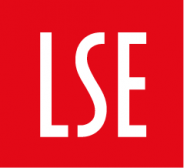Mapping urbanisation in India with satellite imagery
-
Vogel-et-al-2019-policy-brief.pdf
PDF document • 452.94 KB
- Satellite images provide a promising source of data for measuring urbanisation: It provides higher spatial and temporal resolution than administrative data.
- This project uses remotely sensed data to detect urban markets in India for 2013 (accessible via the Google Earth Engine).
- We find that landcover-based markets detected from daytime satellite imagery are realistically jagged in shape and reveal substantially more variation in the density of economic activity when compared to nightlight-based markets.
- Nightlight-based markets capture 23.4% of India’s total population and 75.3% of its urban population. Landcover-based markets capture 29% of India’s total population and 93.2% of its urban population.
- We detect strong correlations between market size and proximity to public infrastructure.
- High resolution day-time satellite data can be used to accurately measure urban footprints, while coarser nighttime satellite data can be used to measure the intensity of economic activity within those footprints.
- Satellite imagery can be used for the study of urban sprawl, urbanisation dynamics, the effects of land use policies, and the effects of infrastructure on urbanisation and economic activity.





